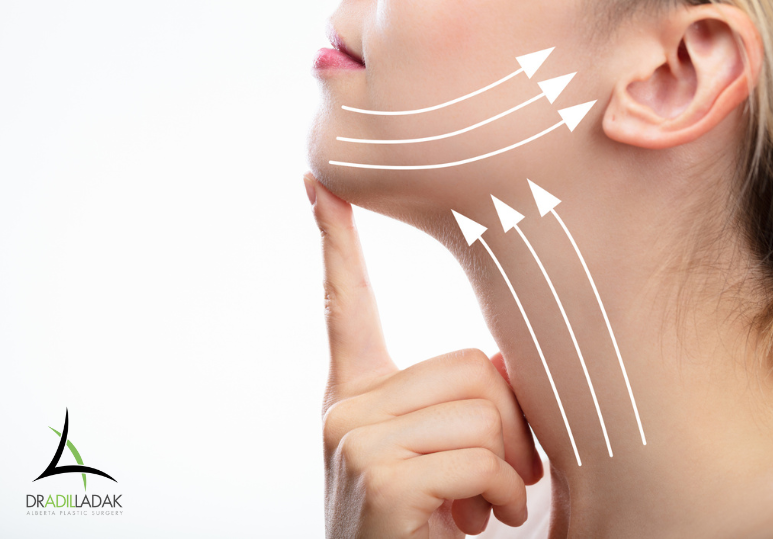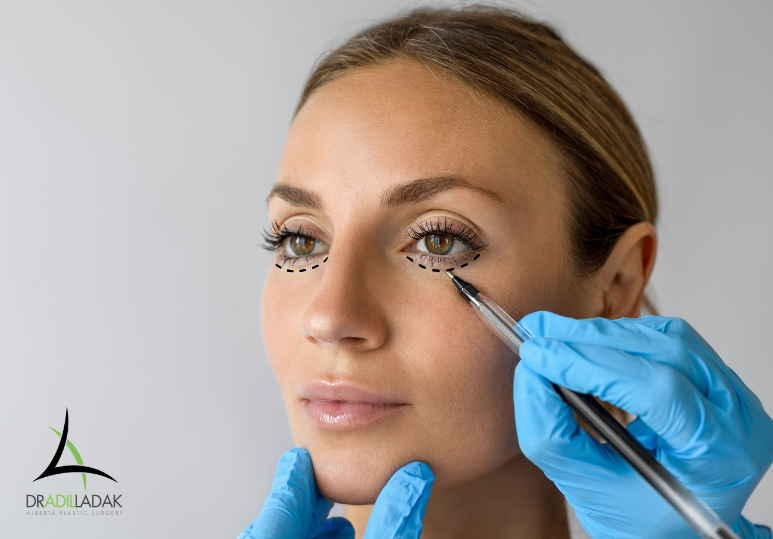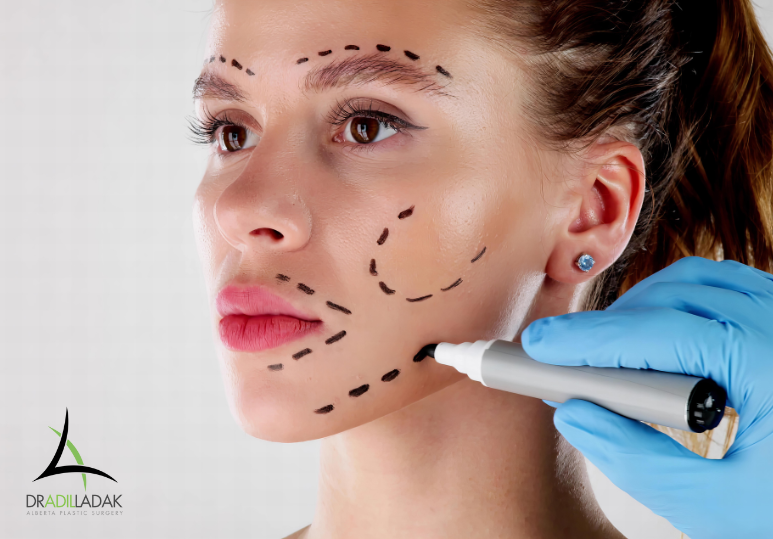Tissue fillers have become extremely popular in recent years due to their ability to achieve significant facial rejuvenation without the drawbacks of a facelift surgery, such as pain or recovery time. However, they do have certain limitations. Here’s how to decide whether tissue fillers or a facelift is the right option for you.
A non-surgical facelift refers to minimally invasive and non-surgical cosmetic treatment that is designed to rejuvenate and refresh your appearance. This includes injectables such as tissue fillers and Botox, and when compared to facelift surgery, they do not require:
- Large incisions
- General anesthesia
- Overnight stay in the hospital
- Significant downtime
- High costs
If you are looking to improve your appearance or eliminate fine lines and wrinkles, but you’re not ready for a facelift surgery and all the risks that come with it, injectables such as Botox or tissue fillers could be the answer.
Customized Botox, Tissue Filler, and Facelift Surgeries in Edmonton
At our Edmonton clinic, we offer our patients both surgical and non-surgical facial rejuvenation options to help you achieve all your aesthetic goals in a safe and quick manner. During a consultation, our board-certified plastic surgeon will assess your needs, general health, and lifestyle, to help determine which facial rejuvenation option will work best for you.
Want to know more?
NON-SURGICAL SKIN TREATMENTS IN EDMONTON
Facelift vs Tissue Fillers: How To Decide Which Facial Rejuvenation Treatment is Right For You
Tissue fillers such as Juvederm and Restylane, and wrinkle relaxers, such as Botox, are gaining popularity due to their ability to quickly rejuvenate patients’ appearances without any of the drawbacks that come with cosmetic surgical procedures, such as pain, long recovery times, and surgical risks.
For older individuals, however, such skin treatments have their limitations, and often facelifts are the best course for more advanced signs of aging.
Here’s how to decide which anti-aging cosmetic procedure is right for you:
Tissue Filler Treatments
There are several types of tissue fillers available to address a wide variety of facial aging issues. Fillers such as Juvederm, Volbella, Restylane, and Voluma can be used to add instant volume, which will:
- Smooth out wrinkles
- Plump lips
- Fill out thinning cheeks
- Fill in hollow temples
Quick Facts About Tissue Fillers
- Ideal treatment for: Minor signs of aging
- Invasiveness: These treatments are minimally invasive.
- Recovery time: Most patients can return to their daily activities immediately after the treatment.
- Longevity of results: Depending on the filler, the results can last up to 12 months.
- Follow up procedures: Follow up procedures are required to maintain the great results.
One of the best things about tissue fillers is that they are relatively painless and require little to no downtime. While you may experience some temporary bruising or swelling, most patients can get filler treatments during their lunch breaks, and return to normal activities immediately after the procedure.
Who Is The Ideal Candidate For Tissue Fillers?
Tissue fillers are best used to correct the early signs of facial aging on younger patients - that is individuals who are under 50 years of age. The ideal candidates for these injectables are those who experience low degrees of aging, such as:
- Shallow wrinkles
- Light volume loss
- Relatively normal skin elasticity
In such cases, the regular use of tissue fillers can prevent the need for more invasive procedures, such as facelifts, especially if the patient begins such treatments in the early stages of aging.
TISSUE FILLER TREATMENTS IN EDMONTON
What Fillers Can’t Accomplish
While fillers are a very effective anti-aging treatment, they cannot adequately address a range of late-term aging symptoms experienced by older adults. These include:
- Deeper wrinkles and folds
- Finely etched-in lines
- Vertical neck bands resulting from loose neck skin
- Jowl formation
While it is understandable that people may want to avoid facelift surgery, using tissue fillers to correct moderate to severe signs of aging can actually make these signs worse. Typically, fillers in people with severe tissue laxity will result in an unnatural appearance, where:
- Your face might start to lack normal definition
- Normal facial expressions become impared
- Facial proportions become distorted
Surgical Facelifts: When Is This The Right Option?
A surgical facelift is often the best way to address advanced signs of aging and involves the manual excision and tightening of loose and sagging skin, as well as underlying muscle. During this procedure, your surgeon will:
- Make several incisions around the hairline, past the front of your ears and under your chin.
- Remove excess fat and tighten muscles as needed.
- Pull and stitch back the skin to the line where the incision was initially made.
Quick Facts About Facelifts
- Ideal for: Moderate to severe signs of aging
- Invasiveness: Surgical
- Recovery time: 2-3 weeks before patients can return to normal activities
- Longevity of results: 7-10 years
- Follow-up procedures: None
There are many different types of facelift procedures, but most of these techniques can result in a dramatic and satisfactory final result, knocking off years of aging.
Facelift vs Tissue Filler: What is The Cost Difference?
While the cost of each procedure will vary from patient to patient, a facelift procedure is typically more costly than a dermal filler treatment. However, keep in mind that tissue filler results are temporary and must be maintained with continuous treatments.
In terms of cumulative costs, that means that it may be possible for a facelift to be cheaper compared to fillers over time.
Want To Know Which Treatment is Best For You? Talk to Your Plastic Surgeon
The best way to determine if you are better suited for a facelift or fillers is by scheduling a consultation with a board-certified plastic surgeon. To find out more, fill out our online contact form.





